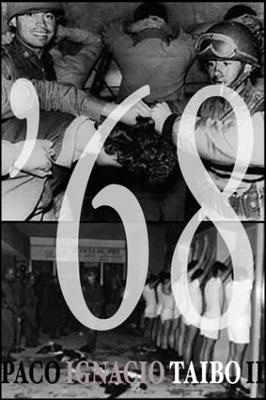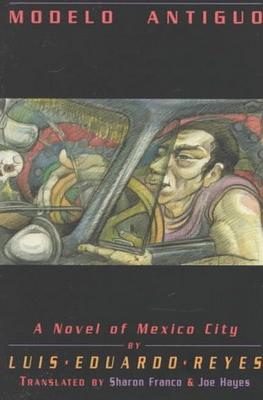Tlaxocamatl Tonantzin
In Mexico, I think nothing is more honored and adored than the Virgen de Guadalupe or, as I know her, Tonantzin. Her image is everywhere. Statues, candles, blankets, sarapes, scarves, murals, roadside shrines - her peaceful and radiant countenance blesses you. She lives in homes, tattoos, in the marketplace, in song, everywhere, she touches everything. Even one of the most popular singers in Mexico wrote a song for her! In fact, singers of all types - rock bands, mariachis, the
pop stars, the rancheros, EVERYONE loves the Virgencita Morena, the Goddess of the Americas.
She was the image on the banners and flags of Father Miguel Hidalgo and his followers in the fight for Mexican Independance. She is entrenched so deeply into our culture and ideology that she’s like an old and very beloved friend. We call her little mother. She’s our collective mother, the mother of a conquered but not defeated nation, the mother who fights for us, protects us and loves us no matter who or what we are and become. We live and breathe Guadalupe. In every family, someone, boy or girl is named Guadalupe and carries that name with pride.

The Catholic Church has it's story of the Virgen de Guadalupe and Juan Diego, we indigenous people have another. Somehow, like so much in Mexico the two things blended and we have Catholic dogma mixed with indigenous belief. Tonantzin wouldn't be erased and she lives stronger than ever in our hearts and minds.

Every year on her day, December 12th - thousands of people gather at her shrine on Tepeyac to give her honor, to pay homage, to dance prayers for her, to sing Las Manañitas to her and to show their devotion. Indigenous people from all over Mexico leave their villages and walk or crawl up to the sierra de Tepeyac in an ancient pilgrimage. The actual holy ground is a little hill behind the Basilica. This hill was sacred to Tonantzin and consecrated to Her by the indigenous people of Mexico long before the conquest. The pilgrimage was happening in pre-Columbian times as well.

As far back as I can remember my life was dominated by the Guadalupe. In the sala (living room) my grandmother Lupe’s house (her name was Maria Guadalupe) in the place of honor on the wall was a huge, framed print of the Virgen de Guadalupe standing on the hill of Tepeyac with Juan Diego kneeling at her feet, tilma open and filled with roses. It was a beautiful print with a soft washed from age look to it. You could clearly see the nopales (cacti) that were growing on the hillside. Every day my grandmother would put fresh flowers in front of that print. “Flores para la virgen”, she would tell me, “Flowers for the Virgen”. I learned to cut fresh roses and other flowers from the garden for vases throughout the house, keeping only the best and showiest to put in front of the print. Just like my grandmother, I’d say a little prayer to her as I left her her flowers. She was as real to me as my sisters were and I talked to her far more freely. La Lupita was my confidant, my protector, my dear little mother.
At church, my grandmother was a member of a society called Las Guadalupanas and they were devotees of her. Every morning, my grandmother Lupe would don her lacy mantilla and head off for mass where she’d pray to the Virgen de Guadalupe. See, she’s everywhere and in everything.

In Aztec culture, Guadalupe was Tonantzin, the mother of all, Mother Earth, The Goddess of Sustenance, Honored Grandmother, Snake, Aztec Goddess of the Earth. She brought the corn, Mother of the Corn. Even then She was All and Everything. She represented mothers, fertility, the moon, the sacred number 7. In fact, she was sometimes known as 7 Serpent. She was always there and she was always our little mother.

Corn is sacred to Tonantzin. The flowers we know as poinsettias were called Cuetlaxochitl were also very sacred to her and they grew on Tepeyac in wintertime as tall as ten feet high. Tunas (cactus fruit or prickly pear) are also especially sacred to Tonantzin growing as they do on the cacti that grows on her sacred and holy ground. Filled with seeds inside and a rich, juicy red fruit, the tunas represent both fertility and the womb, the blood of women and the sweetness of life. Tomatoes are another sacred fruit to Her. On my altar, I often put flor de noche Buena (another word for poinsettias meaning flower of the good night), tunas, chiles, cacao beans and tomatoes. The colors red, white and green, the colors of the Mexican flag are sacred to Her as well.
Early tomorrow morning, the morning of the 12th at 2a.m. at the Placita Olvera (Olvera Street) in Los Angeles, mariachis, devotees of the Virgen de Guadalupe, Aztec dancers, folklorico dancers, deer dancers, musicians, priests, nuns, and many more will start paying homage to Her. We will sing Las Mananitas, the traditional birthday song, we will pray and dance. Aztec dancers will dance at Catholic masses everywhere and they will do the prayer dance Tonantzin first. They will dance various variations of Tonantzin and give Her honor. In Mexico, on a much larger scale, celebrities, the elite, the politicians, Zapatistas, narcotrafficantes, men, women and children will all pay homage to our beloved Virgen de Guadalupe. We will give thanks to her for all we’ve received from her merciful hands, we will pray for the sick, the prisoners, the homeless, the helpless and we know that She is mercy, kindness, acceptance and love. She commands a tremendous devotion from the people that love her just by being Guadalupe. I believe she has given me much – my life, my children, my grandchildren, the food I eat. She is the goddess of the harvest, she represents the mother in me and in all women. She simply is and so I say Tlaxocamatl Tonantzin, thank you virgen de Guadalupe for all you have given. Tlaxocamatl Tonantzin. Ometeotl.
From the City of the Queen of the Angels, desde la ciudad de Nuestra Reina de los Angeles,
Atonatiuh Eloxochitl
Mar y Sol Datura Flower
otherwise know as
Gina MarySol Ruiz
Who is on her way to dance for the Virgen de Guadalupe and one for her Grandmother Lupe too.















